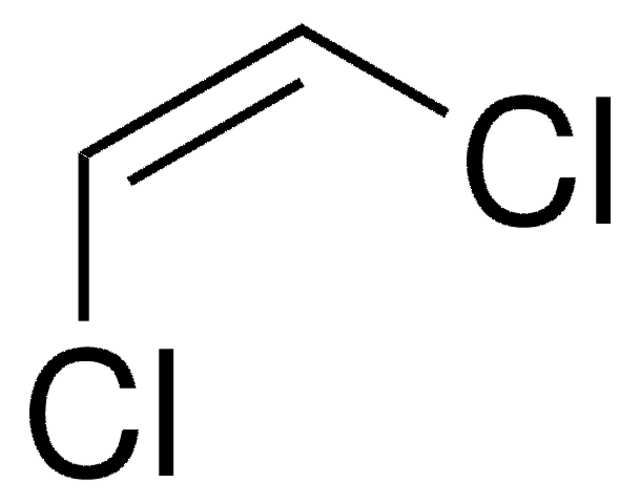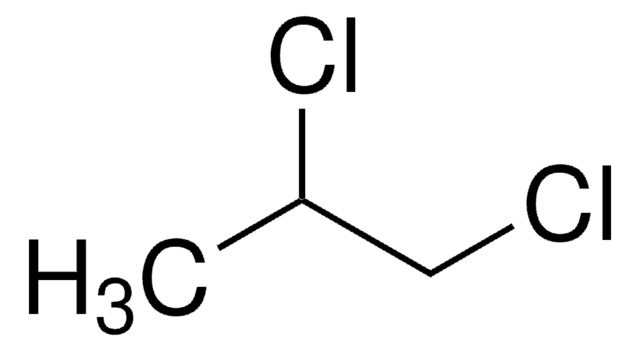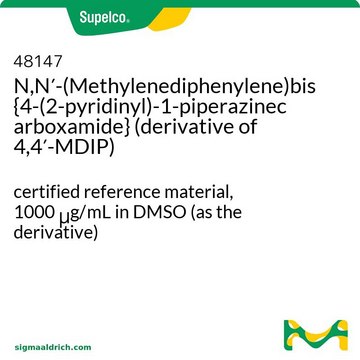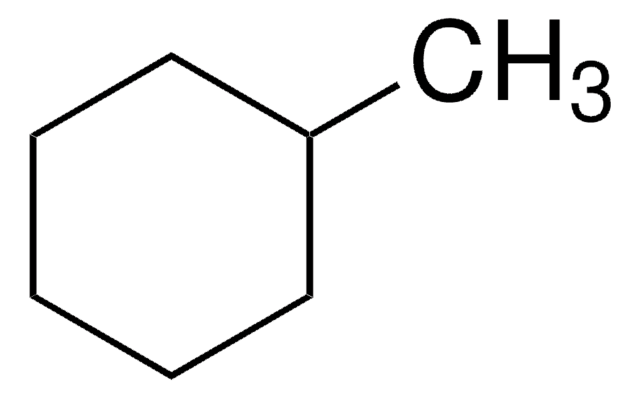D62403
1,2-Dichloroethylene, mixture of cis and trans
98%
Sinónimos:
1,2-Dichloroethene, Acetylene dichloride, sym-Dichloroethylene
About This Item
Productos recomendados
presión de vapor
5.32 psi ( 20 °C)
Nivel de calidad
Ensayo
98%
Formulario
liquid
índice de refracción
n20/D 1.447 (lit.)
bp
48-60 °C (lit.)
mp
−57 °C (lit.)
densidad
1.265 g/mL at 25 °C (lit.)
cadena SMILES
Cl\C=C\Cl
InChI
1S/C2H2Cl2/c3-1-2-4/h1-2H/b2-1+
Clave InChI
KFUSEUYYWQURPO-OWOJBTEDSA-N
¿Está buscando productos similares? Visita Guía de comparación de productos
Categorías relacionadas
Descripción general
Aplicación
- Chloro-enynes from terminal alkynes via Sonogashira coupling.
- Trichloroethyl alkyl ketones by reacting with acyl chlorides via Friedel-Crafts reaction in the presence of aluminum chloride.
- (Ethenediyl)bis[thiazole] via Pd-catalyzed Stille-coupling reaction with 2-(tributylstannyl)thiazole.
Para utilizar con
Palabra de señalización
Danger
Frases de peligro
Consejos de prudencia
Clasificaciones de peligro
Acute Tox. 4 Inhalation - Aquatic Chronic 3 - Flam. Liq. 2
Código de clase de almacenamiento
3 - Flammable liquids
Clase de riesgo para el agua (WGK)
WGK 2
Punto de inflamabilidad (°F)
42.8 °F - closed cup
Punto de inflamabilidad (°C)
6 °C - closed cup
Equipo de protección personal
Eyeshields, Faceshields, Gloves
Elija entre una de las versiones más recientes:
¿Ya tiene este producto?
Encuentre la documentación para los productos que ha comprado recientemente en la Biblioteca de documentos.
Los clientes también vieron
Nuestro equipo de científicos tiene experiencia en todas las áreas de investigación: Ciencias de la vida, Ciencia de los materiales, Síntesis química, Cromatografía, Analítica y muchas otras.
Póngase en contacto con el Servicio técnico











